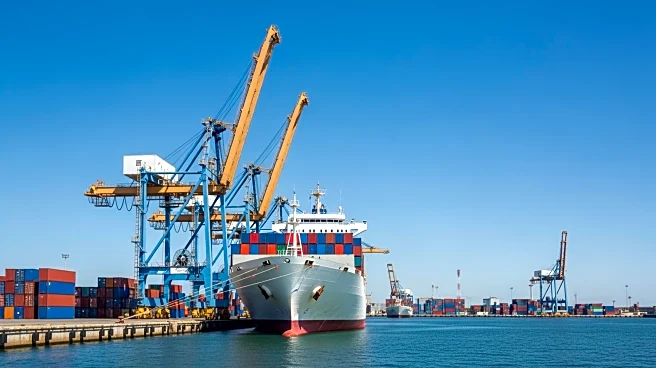What's Happening?
President Trump has announced plans to use revenue generated from tariffs to fund a $2,000 dividend for Americans, excluding high-income individuals. This announcement comes as the Supreme Court begins
reviewing the legality of Trump's use of emergency powers to impose tariffs. The tariffs, part of Trump's 'Liberation Day' initiative, have significantly increased duty revenues, reaching $215.2 billion in fiscal year 2025. The Supreme Court's decision will determine whether the authority to impose tariffs lies with Congress or the President, following a federal appeals court ruling that Trump overstepped his authority.
Why It's Important?
The outcome of the Supreme Court case could have significant implications for U.S. trade policy and presidential powers. If the court rules against Trump, it may limit the President's ability to unilaterally impose tariffs, potentially affecting future trade negotiations and economic strategies. The proposed $2,000 dividend could provide financial relief to many Americans, but its feasibility depends on the legal validation of the tariffs. The decision will also impact U.S.-China trade relations and could influence the broader economic landscape, including stock market performance and inflation rates.
What's Next?
The Supreme Court's ruling will be pivotal in determining the future of Trump's trade agenda. If the court upholds the tariffs, it could embolden the administration to pursue further trade measures. Conversely, a ruling against Trump may lead to a reassessment of current tariffs and trade policies. Stakeholders, including businesses and political leaders, are likely to react strongly to the decision, which could influence legislative actions and international trade agreements.












